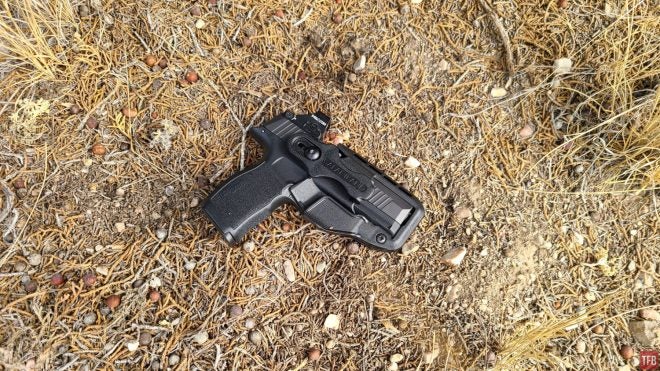Safariland has one of if not the most extensive holster lineups in the market. They recently added a new minimalist model called the Schema. I was intrigued by the design, as well as by Safariland’s pivot into affordable holsters. So how does it work? Let’s take a look.
Safariland @ TFB:
- New Rifle-Rated Plates for Women from Safariland
- Safariland Unveils the New Schema IWB Holster Collection
- New Limited Edition Safariland MultiCam Tropic Gear Now Available
- Safariland Black Multicam Holsters Back By Popular Demand
- The NEW HyperX Tactical Vest From Safariland Armor
No disclosures need to be made for this review. I saw this holster at a local gun store (shout out to Gallenson’s Guns in Salt Lake City) and impulse-bought it. I have no relationship with Safariland, other than having bought several of their holsters previously.
Features
The Schema is a bit of a departure from Safariland’s other offerings. It is a minimalist design that tries to keep as thin of a profile as possible. This is accomplished by omitting the sides of the holster that would traditionally fit against the slide and accessory rail. How does the Schema keep the muzzle in the holster with no sides? It has a small plug that fits into the muzzle. This may seem like an odd solution but it actually works well. Incorrectly-handed people should note that the Schema is not ambidextrous. At this time, it is only available in a right-handed configuration. It is also only made for very common micro 9mm pistols like the SIG Sauer P365 and Glock 43X.
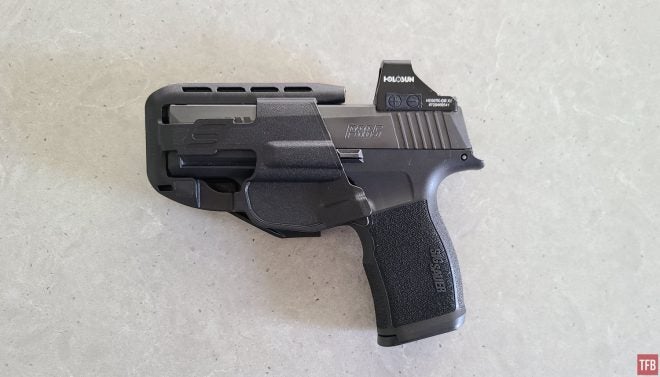
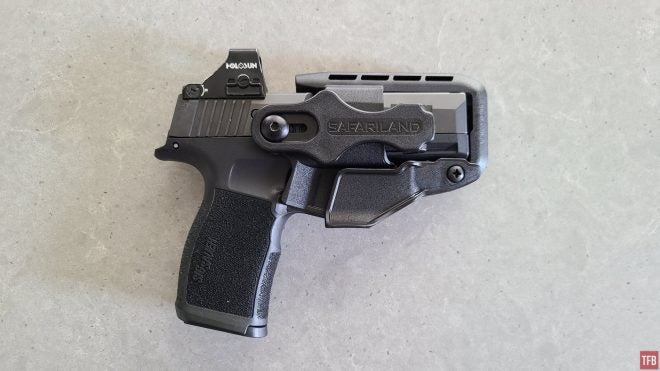
One of the most interesting features of the Schema is the price. I paid $26 for this holster. For a name brand like Safariland that is a deal. Trying out holsters can get really expensive because it is very rare to find the perfect holster first. Most serious concealed carriers end up with somewhere between one and dozens of unused holsters before finding their one true love. Rolling the dice on a holster under $30 is much easier to stomach than a $60 to $100 option.
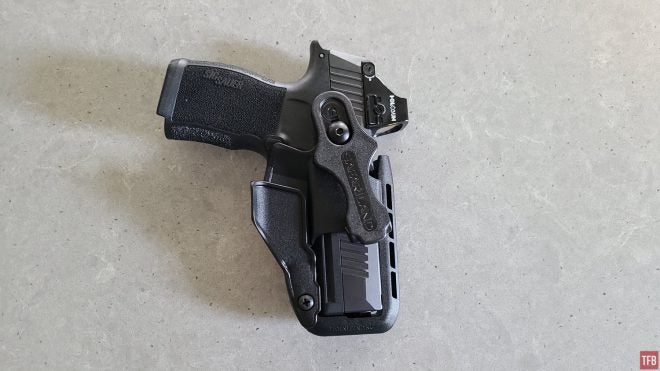
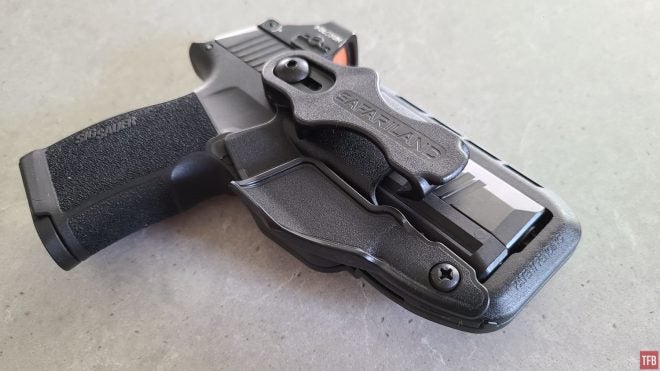
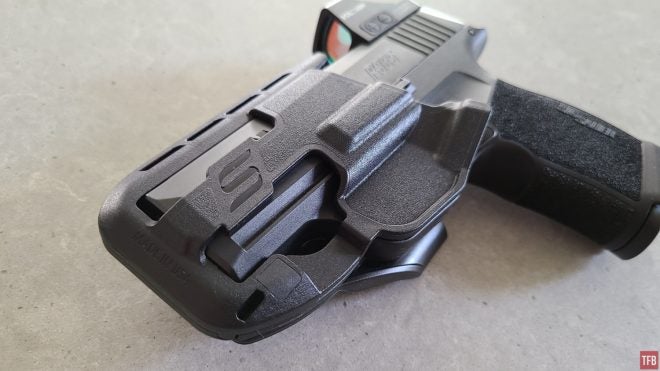
The other feature that most interested me was the belt clip design. It is adjustable for ride height as well as angle. The teeth on the holster and clip allow the angle to adjust in small increments forward and aft. In a pinch, the Schema could be set up with enough forward cant to work as a strong side holster. I did not find it very comfortable in that configuration but it would work if it really needed to.
A wing is also included in the Schema. Wings have become more common in recent years because they help push the grip back in against the body. This particular wing is a very simple design and it can be removed, but it will leave a weird gap under the screw. It is also very narrow and if the ride height is adjusted, it can place the wing in a suboptimal position relative to the belt.
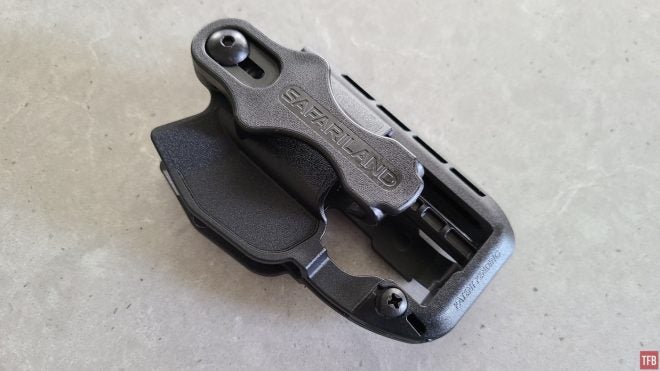
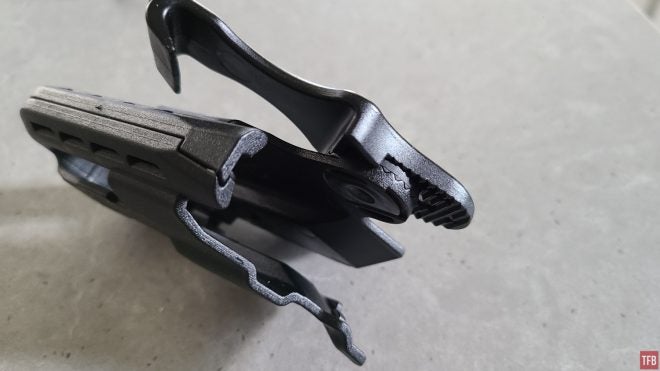
Carrying the Schema
After playing around with the Schema for a while and some dry fire reps, I started carrying it on a regular basis. I generally wear slacks or chinos with an untucked shirt and a Black Arch Holsters EDC belt. I did not carry it every day, but it was on my belt most days for about two months.
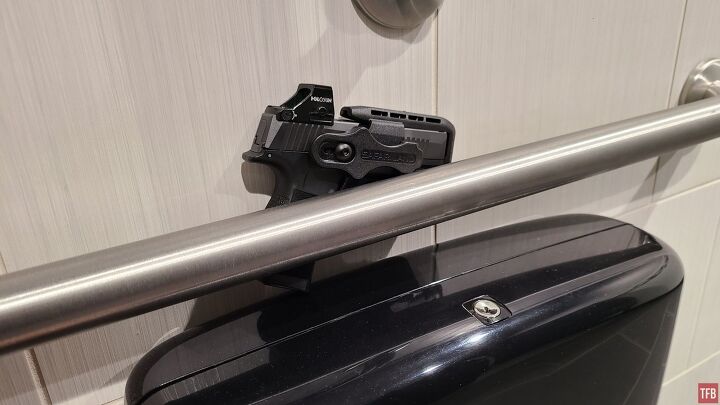
Minimalist holsters can be counterintuitive. A small, thin holster should be more comfortable than a big thick holster, right? It is not always that simple. Often, a longer holster with the right kind of thickness prevents uncomfortable hot spots when carrying. The rise of holster wedges is a good example of added holster size increasing comfort. It may be possible to mount an aftermarket wedge but it would be difficult.
The short, thin design of the holster causes a lot of rolling as the gun is carried. A micro 9mm like this SIG Sauer P365 is not a heavy gun, but a large percentage of its weight is above the belt line. The weight of 12+1 rounds of 9mm and the red dot pull the gun forward out over the belt and there is nothing in the design of the Schema that reduces the roll. There were several times when I noticed a lot of printing thanks to this rolling motion.
I did find some hot spots when carrying the Schema all day, particularly at the muzzle end. Playing around with the ride height did help, but there were certain situations where it would still get uncomfortable. The rounded corners and smooth edges are a nice touch and did make the holster more comfortable.
The belt clip was easy to take on and off. In common situations like a bathroom stall, it was not difficult to don and doff. The Schema also provides good retention and the gun does not feel like it will leave the holster unless it is intentional.
Users in very humid environments might prefer closed sides on the holster to reduce sweat exposure. For instance, a certain TFB writer who will remain nameless has a reputation for sweat-induced rust on carry pistols. This is not the best holster for him.
Drawing from the Schema was uneventful. It worked fine and stayed on the belt as the pistol was removed. While it is a minimal design, it still has enough structure to make reholstering possible.
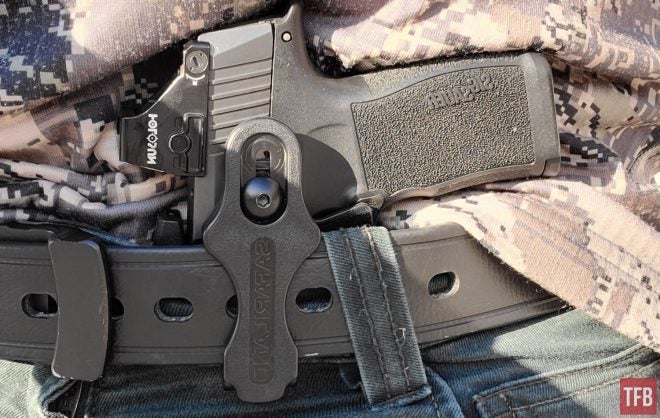
Conclusion
The Schema is not the most comfortable holster I have used. However, it is also not the worst. For under $30, it provides some decent features on a simple grab-and-go holster. It is not likely to become the everyday holster of choice for most users. The best use case for this holster is probably as a lightweight backup or spare holster option in addition to a more premium rig. But for somewhere around $26, it is would not break the bank to try out the Schema.
 Your Privacy Choices
Your Privacy Choices
